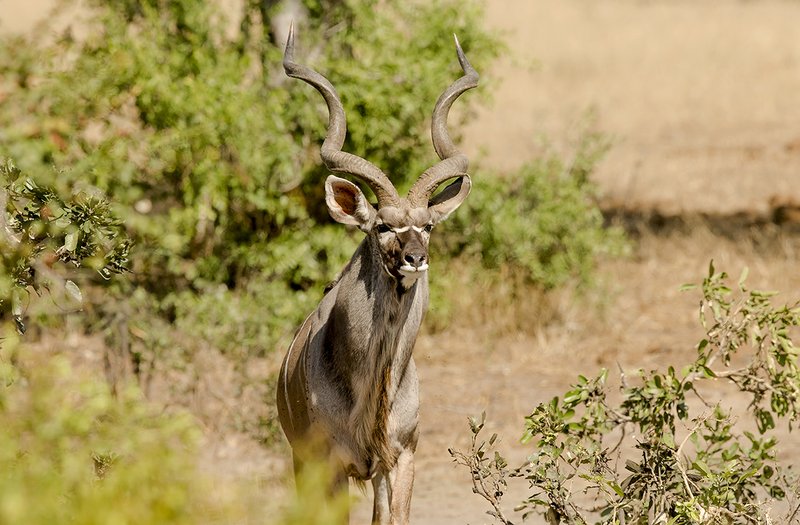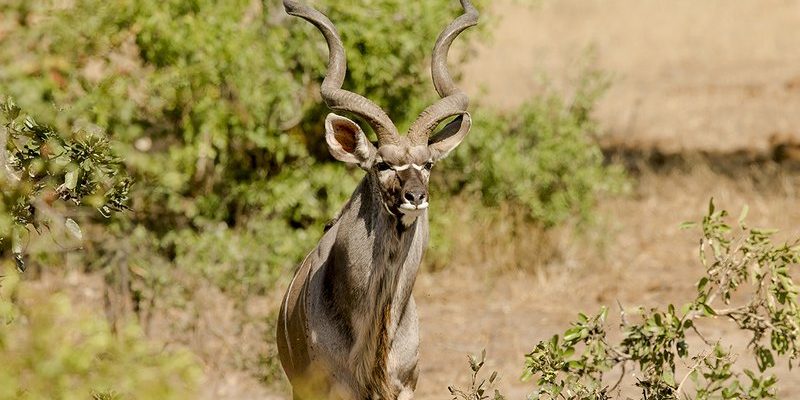
Let’s dive into this question. Imagine you’re out in the vast landscapes of Southern Africa. You spot a greater kudu standing gracefully under a tree, chewing on some leaves. While they look peaceful, there’s more to their behavior than meets the eye. Understanding their nature helps us appreciate their beauty while also recognizing if they pose any danger to us.
What is the Greater Kudu?
The greater kudu is one of the largest species of antelope, often found in the woodland and bushy savanna regions of Africa. These animals are known for their long legs, and the males can weigh up to 600 pounds! Their coat is typically a warm, reddish-brown color with white stripes that help them blend into their natural habitat. It’s almost like nature gave them a chic design to keep them hidden from predators.
The males sport impressive, spiraled horns that can grow up to 6 feet long. Picture that: a pair of elegant, spiraling horns protruding from a sturdy, majestic animal. Meanwhile, the females are hornless and generally lighter in weight, making them more agile. It’s fascinating how nature designs different features for different roles.
While they may seem peaceful, the greater kudu plays a vital role in their ecosystem. They graze on grasses, leaves, and shrubs, which helps maintain the balance in their environment. And like many wild animals, they have their own ways of defending themselves when threatened.
Are Greater Kudus Aggressive?
You might be surprised to learn that greater kudus are typically not aggressive. They are shy and tend to avoid confrontations with humans whenever possible. If you encounter one in the wild, it’s more likely to flee than fight. This instinct to avoid danger has kept them safe for centuries.
However, if a kudu feels cornered or threatened, especially during the breeding season or if they have a calf nearby, they might act defensively. Their size and strength can be intimidating; a kick from a kudu is no joke! It’s similar to how a mother bear might protect her cubs. In that way, you can see them as gentle creatures with a strong instinct to defend themselves and their young.
Keep in mind that habitat loss and human encroachment into their territories can create situations where kudus feel trapped. This might lead to unexpected encounters that could escalate quickly if humans do not react calmly.
Can They Cause Harm to Humans?
So, can the greater kudu actually be dangerous? The short answer is: not usually. However, there are instances where humans can find themselves in harm’s way. For example, greater kudus are known to be a hazard on roads, particularly at dusk or dawn when they are most active. A collision with a kudu can result in serious injury to both the animal and the driver.
Interestingly, their large size and occasional erratic movements make them difficult to spot until it’s too late. Here’s the thing—when animals are startled, they can leap or dart unpredictably. This behavior can lead to dangerous situations, especially when you’re driving through areas where kudus roam.
To stay safe, it’s essential to be cautious around their habitats. Drive slowly and keep an eye out for wildlife signs. Awareness is key!
How Do Greater Kudus Behave Around Humans?
Greater kudus are generally curious by nature but remain elusive. If they notice humans, they might watch from a distance rather than approach. Their natural instinct is to be cautious. In areas where they are frequently exposed to humans, they can become somewhat accustomed, but their shy demeanor usually remains intact.
While observing these animals, you might find yourself holding your breath, hoping they’ll come closer to admire. However, if the kudu senses any sudden movement or loud noise, it’ll likely bolt for cover. So, it’s best to enjoy their beauty quietly, respecting their space.
In safari parks or reserves, guides often speak about the importance of staying calm around wild animals. It’s fascinating how these creatures have adapted over time to coexist with humans in certain areas, but always with an air of caution.
Understanding Their Habitat and Ecological Role
The greater kudu isn’t just a pretty face; they play a significant role in their ecosystem. By grazing on leaves and shrubs, they help manage plant growth and maintain a balanced environment. Their eating habits allow various plant species to flourish, which in turn supports other wildlife.
Additionally, kudus are prey for larger predators like lions and hyenas, contributing to the food chain. When we think about wildlife, it’s crucial to understand it as a web where every species has its role. That’s what keeps nature thriving!
Their preferred habitats—wooded areas, open savannas, and bushland—provide the ideal balance of food and shelter. Protecting these habitats is essential not only for the kudus but for countless other species that share their home.
What to Do if You Encounter a Greater Kudu
If you find yourself face-to-face with a greater kudu, keep calm. Here are a few tips to handle the situation safely:
- Stay Quiet: Sudden movements or loud noises can startle them.
- Observe from a Distance: Appreciate their beauty without intruding on their space.
- Avoid Feeding: Feeding wild animals can alter their natural behaviors and create dependency.
- Leave the Area: If the kudu seems agitated, back away slowly and quietly.
By following these tips, you can ensure a safe and respectful encounter with these magnificent creatures. Remember, it’s all about appreciating them from a distance.
In the grand scheme of things, the greater kudu is not a threat to humans—they’re more likely to run away than charge. Their natural behaviors reflect a gentle, cautious animal simply trying to survive in a world full of challenges. However, acknowledging their strength and potential for harm in certain situations, like road encounters, is crucial.
Enjoying the beauty of the greater kudu can be a rewarding experience. Just remember, respecting their space and understanding their nature ensures that we can coexist peacefully. After all, these majestic animals bring a unique charm to the African landscape, and that’s something worth cherishing.

